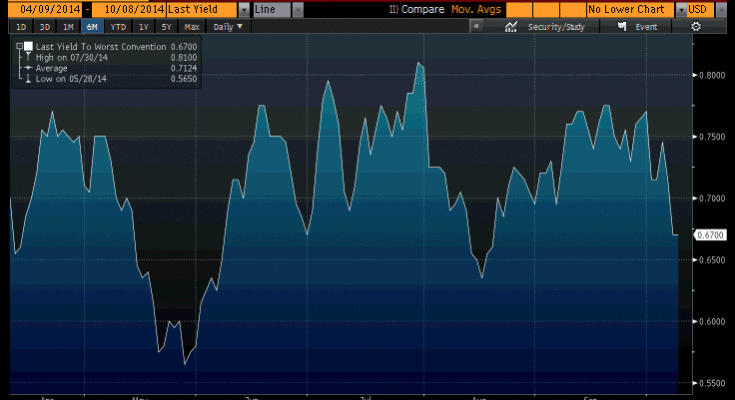The conventional view is that the US dollar’s rally has been driven by shifting expectations of Fed policy. With the expansion taking hold after a disappointing and weather-induced Q1, the divergence between the US and euro are and Japan become more acute. The euro peaked in early May near $1.40 and the dollar bottomed against the yen later in the same month. Â

The implied yield of the December 2015 Fed funds futures contract bottomed around the same time as the dollar bottomed against the yen. The low print was just below 57 bp. The peak was in late-July at 81 bp.  At the end of July, the euro was near $1.34 and the dollar was near JPY103. This is to say that the dollar’s rally in the last couple of months did not coincide with a more hawkish take on Fed policy.Â
This Great Graphic, from Bloomberg, shows the implied yield of the December 2015 Fed funds futures.  Net-net it has spent the past four months in a clear range between about 62 bp and 81 bp.It it is now at 67 bp. The latest Fed forecasts show a median expectation is for 1.375%. Yes that is twice the Fed funds futures show. Â
Some conclude from this that the market does not appreciate the magnitude of Fed tightening that is coming. However, that conclusion misconstrues what is really happening. The Fed’s consensus is immaterial in that it give equal weighting to voting and non-voting members. Dudley’s comments yesterday are a strong indication that the key decision makers’ views have not been swayed by the September jobs data. Dudley specifically characterized the slack in the labor market as significant. He explicitly indicated that based on current information a hike near mid-2015 was “reasonable”.Â
Essentially, the December Fed funds futures contract implies the likelihood of two hikes next year.  There are four meetings in H2 15. Dudley’s reference to mid-year may refer to either the June or July 2015 FOMC meeting. If the first hike is in July, the market is implying one more hike in Q4. There is an FOMC meeting in October and December.Â

